Trading liquidity explained: basic terms, factors and trusted Forex and CFD brokers
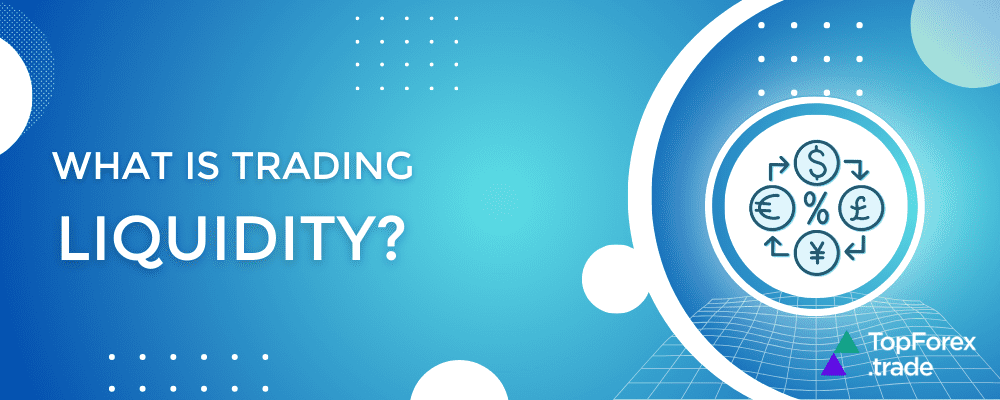
Every trader who plans to make transactions with various financial assets on the Forex market needs to understand what liquidity is. After all, a correct understanding of the concept of liquidity can help you choose assets that are more promising in terms of potential profitability, and therefore can increase your income.
Speaking of liquidity, traders and investors primarily mean the liquidity of the financial instruments they trade, that is, the ability to quickly turn a financial instrument (stocks, futures, bonds, etc.) into money at market value. The faster traders can turn the asset in question into money with minimal loss in value, the more liquid it is.
First of all, liquidity is one of the key factors for traders in the Forex market, because, unlike an investor who opens positions in the long term, a trader intends to earn on relatively short-term and medium-term price movements, and therefore he needs to be able to open and close positions in the shortest possible time and at the most favorable price.
Types of asset liquidity in trading
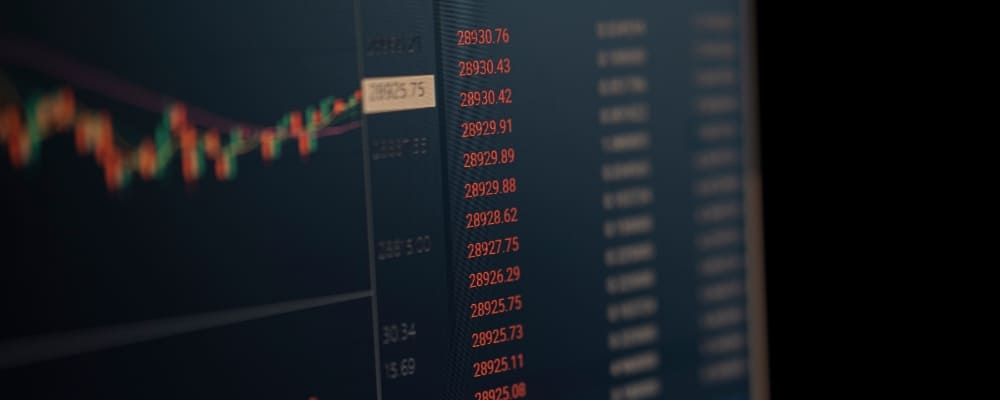
According to the degree of liquidity, all financial instruments are usually divided into three groups:
Highly liquid assets
This type includes, for example, all stocks belonging to the category of “blue chips”. Assets of this type can easily be converted into money within a few seconds to several days. At the same time, due to the many potential buyers, it is possible to sell such assets without losing their value (the spread on them is usually always minimal).
Low liquid assets
This category includes shares of the second and third tier, some commodities, and exotic currencies. Although it is possible to sell assets of this kind without a significant loss in value, this may take several days to several months.
Illiquid assets
Part of the shares of the third echelon, for which there is no demand, can be attributed to this category. In addition, all those assets for which it is quite difficult to find a buyer for a sufficiently long period are also illiquid. These include, for example, real estate or a ready-made business, for which you can look for a buyer for years, and if you need to sell them in a fairly short time, you will have to give way in price greatly.
Market liquidity in Forex trading
Market liquidity refers to the degree to which a market, such as a stock market or a city’s real estate market, allows assets to be bought and sold at stable, transparent prices. If the market is constantly making transactions with a small difference between buying and selling prices (spread), such a market will have high liquidity. There must be so many transactions that each of them individually could not affect the cost of the goods.
The main indicator of liquidity for the market is the ratio of the total volume of contracts concluded for the supply of goods to the volume of goods physically delivered under them. This ratio is called churn, and the market can be considered liquid if the churn parameter is above 15.
Currency market liquidity in trading
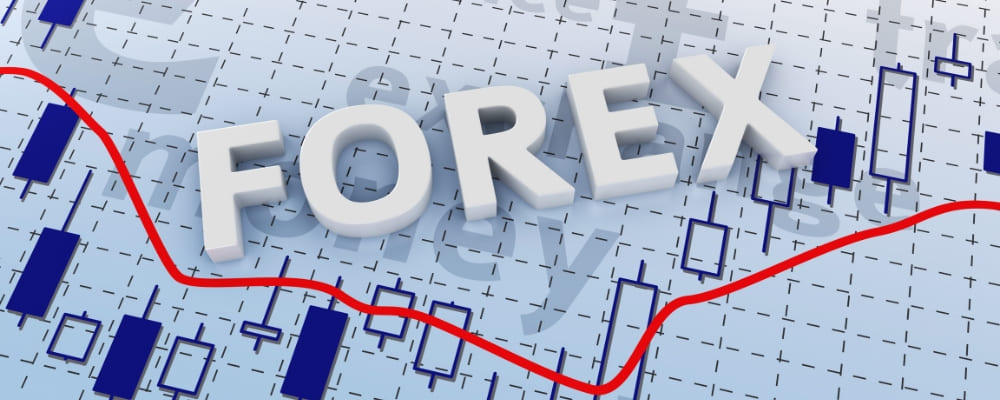
The liquidity of the foreign exchange market illustrates the ability of any currency pair to be sold or bought at a price close to the market. However, not all currency pairs are highly liquid.
The most liquid currency is the USD. In addition to it, six other major currencies enjoy authority in the Forex market – the euro, the British pound sterling, the Japanese yen, the Swiss franc, and Canadian and Australian dollars. Thus, the most traded and liquid currency pairs are EUR/USD, USD/JPY, GBP/USD, AUD/USD, USD/CHF, USD/CAD, EUR/JPY, and EUR/GBP.
Financial instruments as liquid as these currency pairs are suitable for various strategies, including scalping, i.e. making a large number of small transactions on price fluctuations. Also, highly liquid assets often effectively work out Technical analysis signals, and support-resistance levels and are suitable for installing most trading robots.
What is more, the liquidity of currency pairs varies depending on the time of day. The difference in time zones suggests that the liquidity waves generally occur during the Asian, London, and US sessions. The London trading session offers the best liquidity conditions for currency pairs since it is in time between two sessions that overlap at the very beginning and at the end of the working day. In addition, the main currency pairs consist of European currencies. At the same time, during trading in Asia, the liquidity for them is lower, but the activity of trading with pairs, including JPY and CNH, is growing.
Security market liquidity in trading
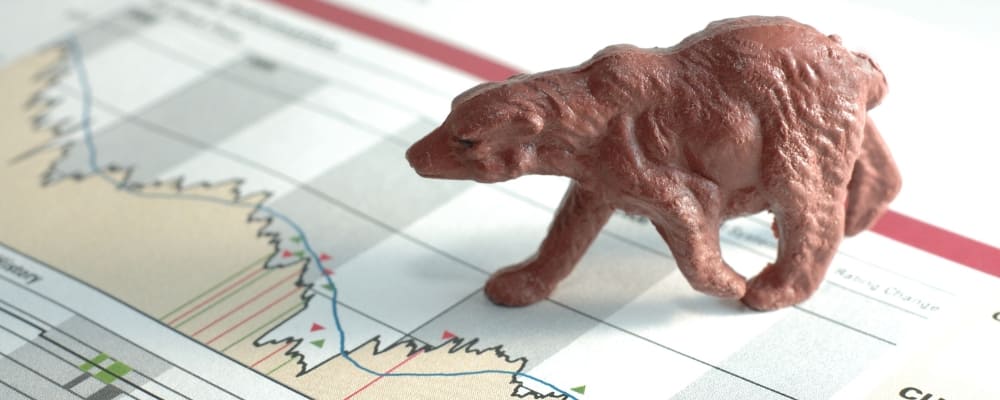
The liquidity of securities, as in the previous case, is the ability to sell them at a market price in a short time, that is, this is the demand for assets. Highly liquid securities are those that at a certain point in time can be quickly sold at a set market price with the least loss. Several parameters determine its level including:
- Issuer stability
A well-known company with stable income, transparent financial policy, and clear prospects will have a lot of people willing to buy shares, which means more liquidity.
- Spread
The range of stock quotes for a particular instrument is inversely proportional to liquidity – the more demanded the asset, the lower the spread level.
- Trade turnover and the number of transactions
The number of transactions made and the amount for which they were concluded indicate the supply and demand for this trading instrument. The higher the volume, the faster you can sell securities.
- Volatility
Its impact on liquidity is similar to the spread — highly liquid assets usually have low volatility.
- Free float
A large percentage of free shares entails an increase in the number of transactions so liquidity is growing. But this rule only works for companies in demand on the market.
Commodity market liquidity in CFD trading

When it comes to commodities, different types of commodities offer different levels of liquidity to market participants. The fact that commodities, such as oil or precious metals, need to be physically delivered to the buyer complicates speculating with them. However, nowadays, with the development of such instruments for trading commodities as futures, options, ETFs, etc., the liquidity of commodity markets has increased. The most liquid commodities are gold, oil, and sugar.
Take for example, the most liquid precious metal, gold. Gold is the most heavily traded commodity, the shining metal is traded in the physical market as well as in the OTC forward and swap markets. The exchange has liquid futures based on gold and options contracts, as well as ETF and ETN products. Other precious metals have varying amounts of liquidity.
When it comes to energy, perhaps the most liquid and ubiquitous commodity in the world is crude oil. While popular and sought coal is not traded to the same extent or with as many derivatives as crude oil.
To determine the liquidity of different commodity markets, the following characteristics should be taken into account:
- The physical commodity should have an active spot or money-based underlying market;
- The presence of numerous buyers and sellers – hedgers, speculators, investors, and others;
- Open, transparent, and non-discriminatory delivery mechanism;
- A well-defined relationship between a derivative and a physical product;
- Convergence of cash prices and prices that reflect future deliveries over time.
Liquidity of Cryptocurrency trading

Cryptocurrency liquidity is an indicator by which one can assess the popularity of virtual coins on the exchange (the volume of transactions), as well as the possibility of their use for the purchase and sale of goods (services).
Cryptocoin liquidity is taken into account when creating a trading strategy. For example, assets with a low index are characterized by slippage and sharp price changes.
The most liquid Cryptocurrencies include coins that are in the TOP-10 in terms of capitalization and exchange rate. The list includes Bitcoin, Bitcoin Cash, Ethereum, Ripple, and other virtual coins.
When determining the liquidity of virtual coins, it is important to take into account the factors that affect this parameter:
- Exchange possibility;
- Crypto acceptance;
- Regulation;
- Course, capitalization, and daily turnover.
Liquidity is an important parameter that Crypto traders who plan to invest in virtual coins should take into account: the more known the asset and the greater the turnover, the less it is subject to fluctuations. But it is worth considering the influence of other factors, which were mentioned above.
Liquidity ratios in the Forex market
In order to profitably buy or sell securities, a trader also needs to assess the liquidity of the company’s assets, which are evaluated using special coefficients that are calculated according to the balance sheet data and are divided into three categories Cash Ratio, Quick Ratio, and Current Ratio.
The current ratio is a coefficient reflecting the solvency of the company, characterizing its ability to repay current liabilities (obligations with
a period of up to a year). The indicator is calculated by the formula:
Current ratio = Current assets/Current liabilities
The ratio shows whether the company has enough funds that can be used to pay off short-term liabilities. Recommended values are 1-2.
Quick ratio characterizes a company’s ability to pay short-term liabilities by selling its most liquid assets.
It is calculated as the ratio of the most liquid part of current assets (cash, receivables, short-term financial investments) to short-term liabilities; it can also be calculated as the ratio of all current assets, except for inventories, to short-term liabilities:
Quick ratio = (Cash + cash equivalent + short-term investments + accounts receivable)/Current liabilities
or
Quick ratio = (Cash & equivalents + marketable securities + accounts receivable)/Current liabilities
In general, the higher the quick liquidity ratio, the greater the liquidity of the company itself (that is, the company is able to ensure the fulfillment of current obligations due to liquid assets). With a decrease in the quick liquidity ratio, the company may face a temporary shortage of liquidity. Recommended values are 0.3-1.0.
The cash ratio shows what share of short-term debt obligations can be covered by cash and cash equivalents in the form of highly liquid securities and deposits, i.е. absolutely liquid assets of the enterprise according to the formula:
Cash ratio = (Cash + cash equivalents + invested founds)/Current liabilities
This indicator allows you to determine whether the enterprise has resources that can satisfy the requirements of creditors in a critical situation. Recommended values are 0.2-0.5.
Why liquidity is important in trading?
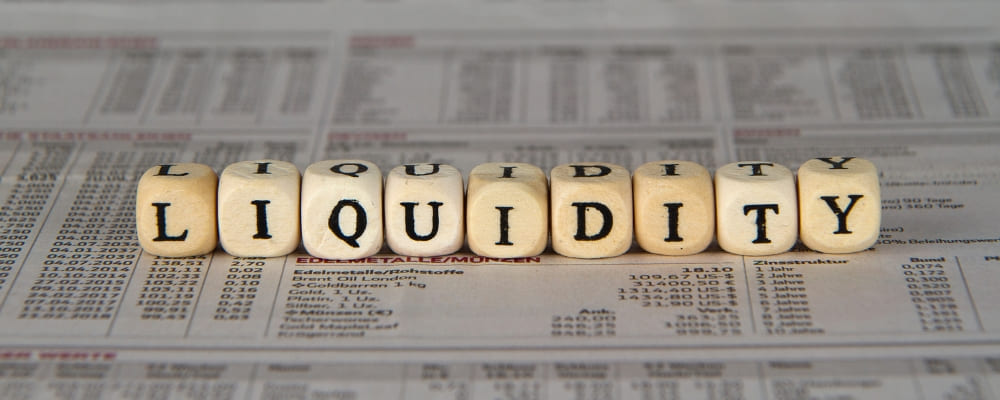
Trading liquidity is an important factor for many reasons. First of all, it affects how quickly an investor can buy or sell a particular asset. A liquid market is often considered less risky, as a result, traders and investors can easily find a buyer or seller for their offer without changing the stated price.
Another important aspect to keep in mind regarding market liquidity is not always fixed. The liquidity of any financial instrument depends on many factors such as the volume and time of trading. For example, you will find less liquidity in currency pairs, including the pound sterling, if you make a trade during the Asian trading session. For this reason, it is extremely important to consider liquidity as it allows you to reach your investment and financial goals as quickly as possible.
Briefly, liquidity benefits include such features:
- The time between placing a position for sale and attracting an interested buyer is significantly reduced;
- Liquid securities and Forex instruments are easier to sell than illiquid ones, which is especially important in emergency and critical situations;
- As a rule, the intrinsic market value of liquid positions is retained, while illiquid positions are not.
Factors affecting Forex market liquidity

The liquidity of any asset depends on many factors, including the level of interest rates in the country, the current quotation (oversold/overbought), the number of assets in circulation, etc.
Another important factor is the asset class. The liquidity of commodities or futures usually depends on the number of exchanges that are active at a given time of day. For example, a national holiday in the United States will directly affect both the liquidity and volatility of instruments traded on the New York and Chicago stock exchanges.
In general, securities traded on popular and large exchanges are highly liquid. Whereas instruments traded in less developed or smaller markets tend to be less liquid.
Secure liquid assets trading with VPN for Forex

For safe and confidential trading of liquid assets, it is the best option to use Top VPN services for Forex trading. VPNs allow you to redirect your traffic through not even one, but several locations, so you will always be protected from government or third-party snoops. In addition, reliable military-grade encryption algorithms will not allow your personal information to leak to the Internet.
If you urgently need to close a deal, and there is only public Wi-Fi nearby, a VPN for Forex will protect your sensitive account information such as passwords, bank details, etc.
Top Forex brokers to trade liquid assets
Traders, in order to manage their own capital as efficiently as possible, should take into account the liquidity factor of those financial instruments that they focus on when trading. This knowledge will help market participants identify low-liquid or completely illiquid instruments in time and exclude them from the trading plans.
Top Forex brokers described below allow traders to buy and sell all types of liquid assets such as currency pairs, commodities, stocks, indices, and a variety of derivatives with the ability to use Сopy trading, advanced risk management tools, as well as various Forex bonuses on your initial deposit.
XM Group Forex trading
XM Group is one of the largest trading service providers with a wide choice of the most liquid financial instruments including more than 55 currency pairs, CFDs, stocks, gold, energy, commodities, and more. Traders have several types of accounts at their disposal, depending on the initial deposit and personal preferences: Micro, Standard, XM Ultra Low, and Shares with negative balance protection, good leverage, and tight spreads.
The company offers its users popular trading platforms: MT4, and MT5, which are adapted for mobile devices. To test the platform’s functionality, you can open a demo account with a deposit of $ 100,000.
XM Group is regulated in several jurisdictions, including ASIC, CySEC, IFSC, and DFSA. The broker also has a very attractive bonus program of 100% for the first deposit up to $5000 and provides the opportunity to connect to a virtual private server (VPS) in London, with which traders can turn on advisors for uninterrupted and non-stop operation and save themselves from constantly monitoring.
eToro Forex trading
eToro is one of the largest platforms for trading popular financial instruments including many international stocks, indices, precious metals, commodities, currency pairs, and exchange-traded instruments (ETFs). Besides, eToro is famous for its wide selection of Cryptocurrencies including Bitcoin, Bitcoin Cash, Ethereum, Ethereum Classic, Ripple, Dash, and many more.
Users can trade on two account types: Retail and Professional Client. Each account has its own conditions: full access to all trading instruments and a CopyTrader tool with negative balance protection for the first one and unrestricted leverage for the second. Besides, the company has its own trading platform available in personal account options and as a mobile app for Android and iOS.
eToro pays special attention to the security of its client’s funds, which is guaranteed by licenses from the FCA (UK), ASIC (Australia), and CySEC (Cyprus/Europe), which helped it earn the trust of millions of traders around the world.
The site interface is intuitive and works in more than 20 languages, which gives traders the opportunity to work without any language barriers. You can also use a free demo account with a $100 000 virtual balance to test your trading strategies and choose the most liquid assets for yourself by clicking on our special button.
HF Markets Forex trading
HF Markets – before rebranding known as HotForex – is an excellent choice for those who want to trade metals, and in particular Forex Gold trading. The broker sets low spreads and gives an opportunity to trade shining metal against both the USD and EUR for maximum efficiency. In addition to metals, traders can find another 1200 instruments, including Forex, energies, indices, commodities, ETFs, stocks, and bonds.
With a broker, you can open several types of Micro, VIP, Premium, Fix and Auto accounts with no commissions and a small initial deposit, and operate on the well-known MT4 and MT5 terminals which are available on desktop, web, and mobile versions for Windows, iOS, macOS, and Android. Also, HF Markets provides VPS service for stable connection and HFcopy trading platform to subscribe to successful traders and copy them.
HF Markets is regulated primarily by CySEC in Europe. In addition, the broker has FCA (UK), FSCA (South Africa), DIFC (Dubai), and SFSA (Seychelles) licenses, according to which the company has the right to provide investment services around the world. Beginners can get acquainted with the platform on a demo account with a virtual balance of $100 000, while experienced traders have the opportunity to test new strategies for free by clicking on the button below.
AvaTrade Forex trading
AvaTrade is a registered and regulated broker that complies with the most stringent requirements of regulatory bodies such as MiFID, ASIC, Japan FSA and FFA, FSB, IIROC, and FSCA. The broker provides trading in more than 60 currency pairs; CFDs on almost all underlying assets, including commodities, stocks, indices; more than 100 shares; Cryptocurrencies – Bitcoin, Litecoin; metals; energy commodities as well as agricultural production.
AvaTrade has many different trading platforms to suit any needs, including MT4, MT5, AvaSocial, AvaTradeGo, AvaOptions, and WebTrader. In addition, so that your trading is not limited to a computer, the broker has developed a mobile application for iOS and Android.
Besides, the broker has launched a new AvaProtect trading feature that gives a trader in a losing position the opportunity to hedge against an unfavorable price move for a selected period of time. You can also test all the possibilities of the platform, as well as try trading on a demo with a virtual balance of $ 100,000, and then start real trading by tapping on our special button.
Plus500 CFDs trading
Plus500 is an excellent choice for trading more than two thousand financial assets: there is a large selection of CFDs for stocks, ETFs, Cryptocurrencies (availability subject to regulations), currency pairs, options, indices, and commodities. The company has developed its own user-friendly trading platform with versions for PC installation, a web platform, and a mobile app.
Deposits and withdrawals can be made using bank transfers, credit and debit cards, and e-wallets. Traders are given an unlimited demo account in order to work out new strategies, try unfamiliar tools, test indicators, and advisers. This option is perfect for beginners who want to gain experience, and professional traders can also benefit by using the demo to practice or compare different terminals.
Plus500 works with traders worldwide and is regulated by FCA (UK), ASIC (Australia), CySEC (Cyprus), ISA (Israel), and MAS (Singapore). In addition, the broker has no commission, which is another advantage of trading. Try trading with Plus500 and test your strategies by clicking on our button below.
82% of retail investor accounts lose money when trading CFDs with this provider. You should consider whether you can afford to take the high risk of losing your money.
Liquidity in Forex trading - FAQ